Samsung Galaxy Note 20 review: lacking any real punch


I've been talking a lot about the Samsung Galaxy Note 20. A 60 Hz display, a plastic back, the Exynos 990 processor: all for £849. After having criticized it rather harshly when it was first released, I'll let you find out in this review whether I had set my expectations for this phablet way too high than I was supposed to after spending several weeks with it.
Good
- Beautiful OLED display
- Versatile camera module setup
- Great performance for everyday tasks
- OneUI 2.5
Bad
- Poor battery life
- Exynos 990 overheats easily
- Plastic design
- Insane price point
- Poor S-Pen implementation
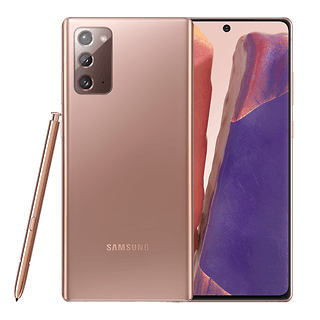
Who is the Samsung Galaxy Note 20 for?
The Samsung Galaxy Note 20 is a high-end smartphone that was released on August 5, 2020. It is only available in a single 256GB/8GB memory configuration. You can choose between 4G and 5G models: the 4G version costs £849, while picking up the 5G model would set you back by £949.
- Also read: The regular Samsung Galaxy S20 is absolutely the one to buy
- Also read: Samsung Galaxy S20 Plus review: a flagship that ticks all the right boxes
- Also read: Samsung Galaxy Note 20 Ultra review: perfection exists only on paper
I used this smartphone for more than 3 weeks after I panned it rather vocally - this is something that I am not going to hide from when it was first announced. Hence, I tried to approach it without any prejudice. However, objectivity is something that can be hard to pin down in journalism - I remember one of my professors when pursuing my Master's degree, saying that the goal is "to approach a matter as objectively as possible."
This particular mantra makes it all the more important to follow in a review, without having to rely on my personal feeling. There is a need to be fair in doing so, to take a step back and counterbalance your bias. And I've had time to reconcile with myself some of the flaws of the Note 20 that I found unforgivable just a month ago.
However, I did find it rather challenging to complete this article as the product did not inspire me. The Samsung Galaxy Note 20 is a good smartphone, make no mistake about it, but the total lack of ambition does not make it a good flagship in 2020. Unless the stylus is a must-have purchase in your list of criteria, the Note 20 is no more relevant than a Galaxy S20, S20 Plus, and even less so than the S20 Fan Edition.
What I like about Samsung Galaxy Note 20...
Its quality OLED display despite the 60 Hz refresh rate
The difference in range between the basic Galaxy Note 20 and the Ultra version is very clear from the outset. Instead of sporting 4K resolution, there are only 2400 x 1080 pixels crammed into 6.7-inches of viewing real estate while sporting a refresh rate of 60 Hz instead of 120 Hz. This is still a choice that I cannot understand, especially when you have a 120 Hz refresh rate on the base Galaxy S20 model.
The absence of curved edges is entirely forgivable though. This is especially so since it's quite fashionable lately to "hate" curved screens, heaven knows why. All in all, the Galaxy Note 20's display could obviously not be all that bad, as this is a Samsung handset that we are referring to!
The contrast levels of an OLED display makes it a stunning performer while the brightness levels can be pushed to the extreme, allowing the elements on the display to always remain legible, even when you are using it under direct sunlight. There is a small punch hole located at the top center segment of the display which does not interfere too much with immersion when you're playing a game or watching a video.
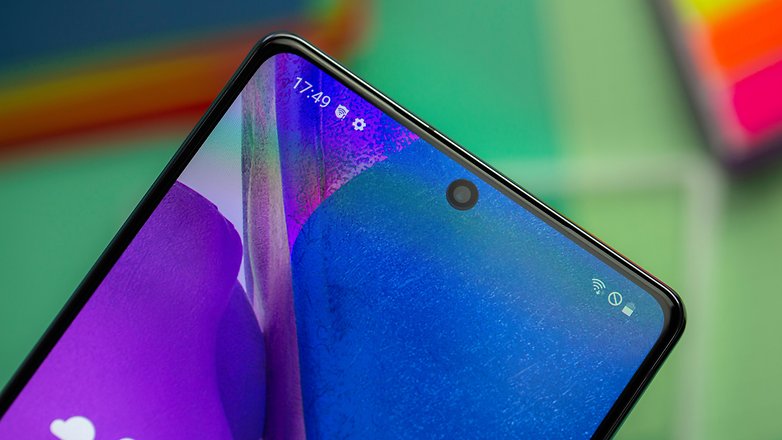
By default, the smartphone is calibrated in vivid display mode with the white balance set to the middle. I found that the colors tended to veer slightly toward blue tones, which can be a little cold but you can easily bring a little more warmth via the settings.
So it's very good for a Samsung display. But, at the risk of getting booed in the comments, I really had a hard time enjoying the 60 Hz refresh rate for such a display, no matter how nice and well-calibrated it is.
Solid performance, but the Exynos 990 is still below par
While we could have hoped for an Exynos 992 processor running proceedings for the Galaxy Note 20 underneath the hood, which is somewhat an overclocked version of the S20 series SoCs, Samsung decided to go ahead with the Exynos 990 SoC. The processor is here mated to 8 GB of LPDDR5 RAM and 256 GB of storage space which cannot be further expanded via a microSD memory card slot.
This means there is no Snapdragon 865 chipset - at least not in Europe where, before the recent release of the Samsung Galaxy S20 FE, you had to buy a foldable smartphone from Samsung in order to enjoy Qualcomm's processor, which is far more powerful than their own Exynos chipset.
- Also read: Gaming smartphones: do I need a 144 Hz display, 16 GB RAM and the latest Snapdragon chipset?
I'll let you compare the benchmark scores of the Galaxy Note 20 with the Ultra model (Exynos 990) and with another Android model equipped with the Snapdragon 865. Overall, we end up with solid performance figures. I can't seriously list the slightly lesser performance of the Exynos 990 against the Snapdragon 865 as a defect.
The navigation is very fluid, even when multitasking. And the most demanding of games like Fortnite or Call of Duty Mobile are launched with graphics and FPS at maximum by default. We're definitely on a high-end chip, no matter what our detractors say, including me.
Samsung Galaxy S20 benchmark results compared:
| Galaxy Note 20 | Galaxy S20 | OnePlus 8 Pro | Galaxy Note 20 Ultra | |
|---|---|---|---|---|
| 3D Mark Sling Shot Extreme ES 3.1 | 6227 | 6187 | 7122 | 5412 |
| 3D Mark Sling Shot Vulkan | 6205 | 5285 | 6613 | 5170 |
| 3D Mark Sling Shot ES 3.0 | 7713 | 7462 | 8864 | 6009 |
| Geekbench 5 (Single / Multi) | 569/2485 | 896 / 2737 | 887 / 3313 | 735 / 2508 |
| PassMark Memory | 16116 | 22045 | 27118 | 22652 |
| PassMark Disk | 99506 | 36311 | 50083 | 98122 |
But it still ticks me off to think that in the US, Galaxy Note 20 owners are entitled not just to the Snapdragon 865, but to its overclocked version, the Snapdragon 865+. In my opinion, it is simply unfair to sell two different products with different performances at the same price by claiming that they are similar.
The versatile camera module
The Galaxy Note 20 is equipped with three cameras at the back. One will thus find from top to bottom:
- 12 MP ultra-wide-angle lens, 13 mm equivalent (f/2.2)
- 12 MP wide-angle main lens, 26 mm equivalent (f/1.8)
- 64 MP wide-angle lens dedicated to 3x zoom, 28 mm equivalent (f/2.0)
Also read: Smartphone camera aperture guide: What does F1.7 actually do?
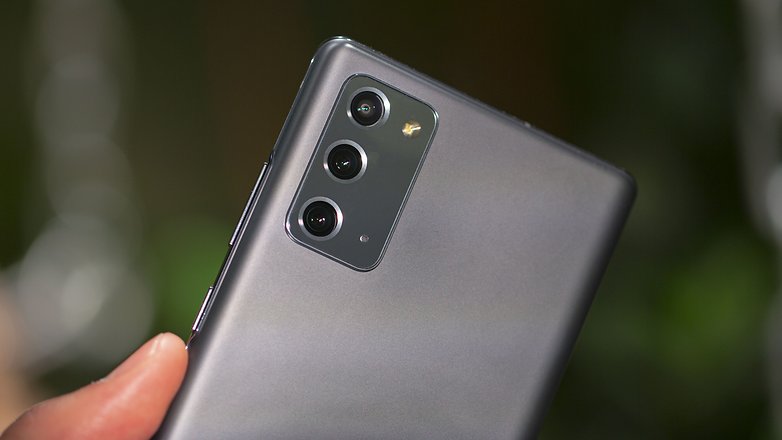
So instead of a telephoto lens, here we end up with a 64-megapixel sensor, with a high definition, and a wide-angle lens but is also not the main lens (when you take regular photos). The default main lens is the 12-megapixel wide-angle sensor.
During the day under good lighting conditions, the results are obviously very good as Samsung has shown that they are capable of some rather stunning photos in the past. The colors always stand out a little more compared to the other manufacturers, but it's a choice that I appreciate. We have a rather wide dynamic range, while the level of detail is more than satisfactory.
The pictures are very bright, regardless of the lens used and there is consistency from one sensor to another in terms of colorimetry (below are three photos taken in 0.6x/12 MP, 1x/12 MP, and 3x/64 MP, clockwise from top).
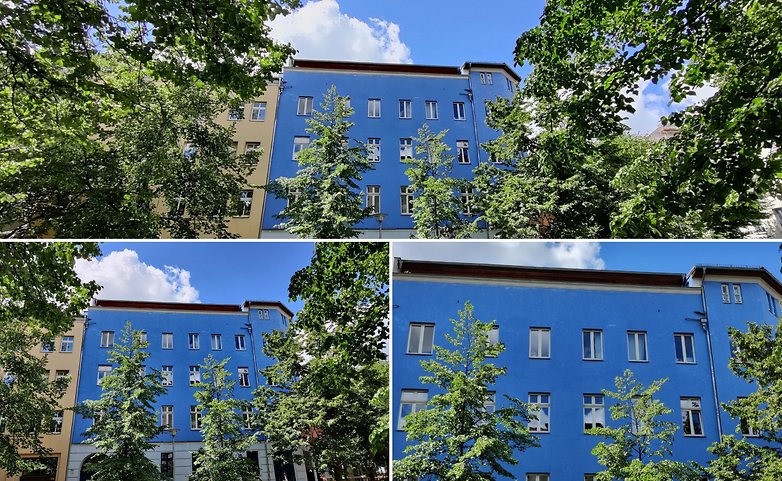
In terms of zoom capability, the 64-megapixel lens provides a hybrid 3x zoom without suffering from any loss of detail, at least according to Samsung. In real-life use, I found that the promise was kept pretty well. But as soon as you go beyond the limits of "optical" magnification, things do go wrong.
To perform its hybrid zoom and then fully digital zoom once goes past the 3x mark, Samsung's photo software crops the 64-megapixel image, enlarges, and reframes it. Needless to say, the 10x and 30x magnifications are unusable and are merely a marketing gimmick.
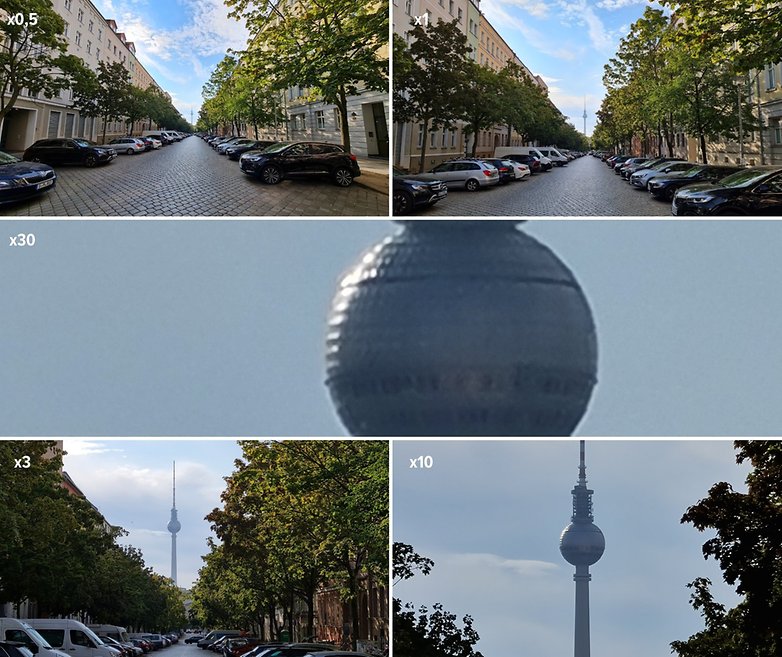
At night, the main 12 MP sensor does rather poorly on its own, but the Night Mode does a decent job of patching up any shortcomings. From a photo that is drowned out by digital noise, with zero spikes you end up with a far more legible rendering - which could be deemed to be a little smooth, although the smartphone does light up the scene rather well.
The good thing is that the Night Mode works well on all three lenses of the camera module. And it's not too aggressive. Yes, it does smoothen the image, but it doesn't try to show what the eye is unable to see, unlike other competitors in its class. It does enough to illuminate shadows and fabric without burning out the bright areas. This helps it maintain the impression of a night shot, instead of a photo that was taken in broad daylight.
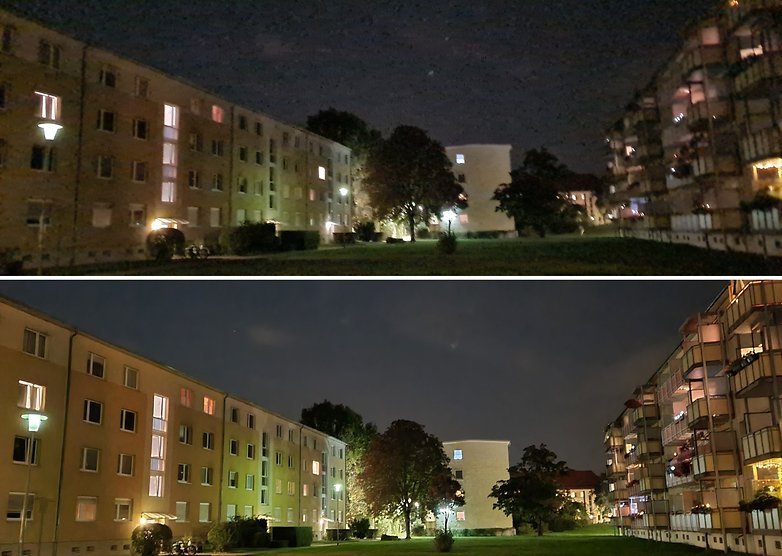
What I don't like the Samsung Galaxy Note 20...
Its tendency to overheat limits performance
This is one big flaw in the Exynos 990 and one that I won't dwell on so that this review doesn't turn into yet another one that nobody will want to read: overheating. It is this particular burden that the Exynos has been carrying around for several years. In one of my articles on the topic of gaming performance of smartphones, I told you about "thermal throttling."
This is a mechanism that reduces performance by lowering the clock speed of the CPU cores and even shutting down its cores to reduce heat build-up and prevent overheating. Almost all smartphones now turn themselves off when they get too hot, for example.
Except that the Samsung Galaxy Note 20 does heat up way too fast than expected. So much so that, and I don't have the tools to measure the rate of overheating and therefore demonstrate it with certainty. In fact, I came away with the impression that I had to stop using it after just a few minutes of gaming.
On Fortnite, which has a native FPS counter and with the graphics cranked up all the way to the maximum level, I was easily running at 60 FPS but suffered heavy frame-rate drops once I got past the half-hour mark. The same can be said for Call of Duty Mobile, where I felt slowdowns after 1 hour of play where everything else worked fine before that.
Even when you update the smartphone or download an app, the smartphone tends to heat up really fast. So when I really wanted to play CoD at night on my way home from the office, I'd switch to the Asus ROG Phone 3 just to avoid any slowdowns or even worse - a total shutdown.
The best way to get the most out of your smartphone
Apple has been mocked a lot in the past for the ridiculous battery life of its iPhone. But the Samsung Galaxy Note 20 frankly fares no better by today's standards.
But with a classic, or even moderate use of three hours of screen time, the smartphone falls below the 15% remaining battery life mark in a matter of just 12 hours. That's a full day's use, no more, no less. It's a far cry from other competitors that are just as expensive.
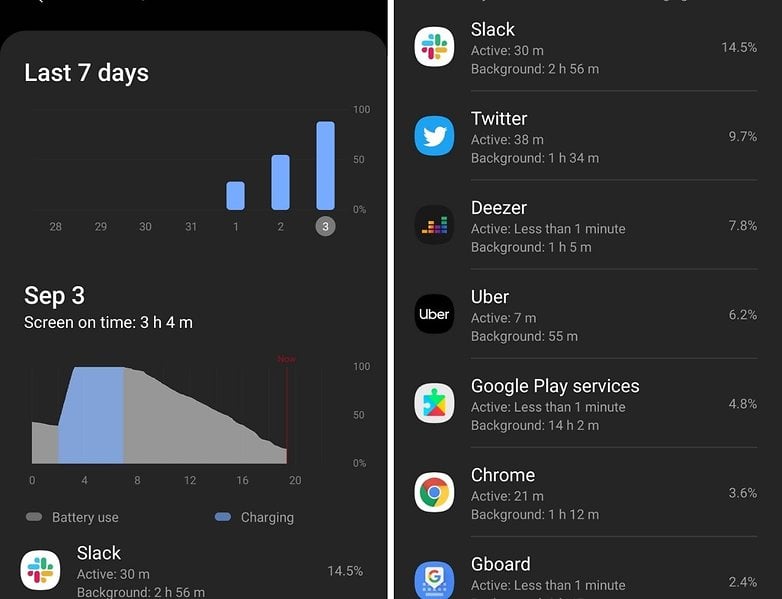
On the PC Mark benchmark that we use at NextPit, which simulates an unrealistic but rather intensive usage pattern, the Samsung Galaxy Note 20 held a little more than 10 hours out of the three tests, which were spaced four or five days apart from each other, that I was able to launch during my 3 weeks of use (10:30, 9:43, 10:11).
When it comes to charging, Samsung provides a 25W charger. That's not much, especially when you compare it to some smartphones that now offer 40W or even 65W chargers. Starting from a 20% charge, it took me more than an hour (1 hour 10 minutes) to reach 100% battery life. That's not bad for a 25W charger, but far more affordable models are able to do much better.
This is a really big flaw for the Samsung Galaxy Note 20. What makes it even more disappointing would be the overheating problems that are related to the SoC. The overheating occurs only after a rather intensive use with resource-intensive games. Here, the battery life lags behind even with a more conventional usage pattern compared to what a regular user would have put it through.
The S-Pen is just another gadget
I can fully understand the interest of having a stylus and I do not in any way question the affection that some users have for this accessory.
And I do not deny either that Samsung has improved its recipe once again since the previous generation Galaxy Note 10. The S-Pen is the best of its kind on the market and on the Android platform.
But I'll be honest, I barely used it after my first few days into the review. In fact, I even forgot it even existed, and so rare were the situations in which I was likely to need it on a daily basis, apart from the review.
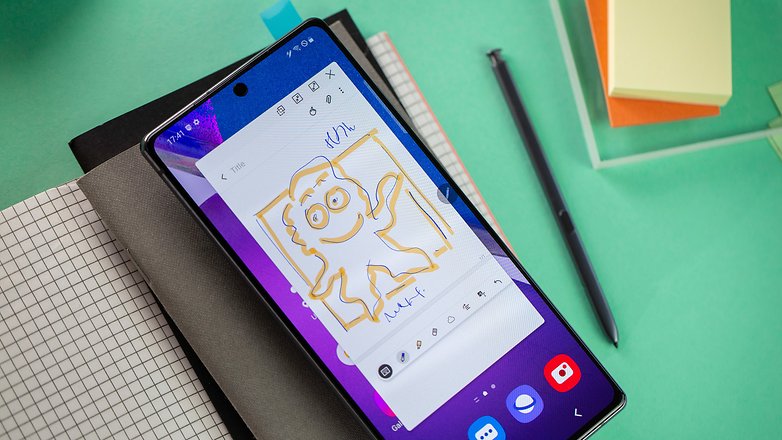
Screenshots, comments, animated scribbles, written notes: everything can be copied as text at the touch of a finger. OCR (Optical Character Recognition) works really well and it's pretty cool to be able to turn your handwritten notes into PDF documents to send them by email.
I've tried it a few times to take notes during online keynotes when I'm usually waiting for the summary press release (but shhh, keep it here between us). The ability to make partial screenshots was also pretty cool to take advantage of.
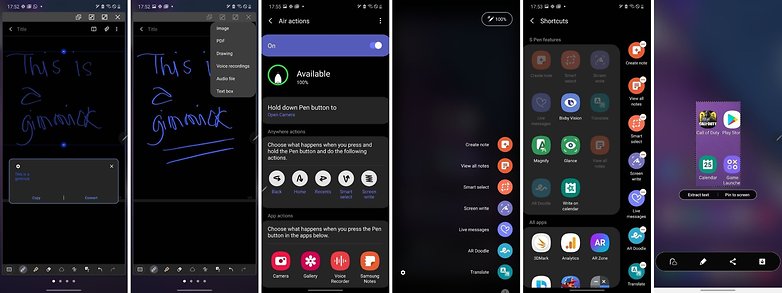
But "Air Gestures", which are gestures made with the S-Pen that Samsung launched last year on the Note 10, are still of little interest to me. What interests me even less would be to take photos by casting Expelliarmus and Avada Kedavra spells with a 'magic wand' in front of my display.
I would find the use of the S-Pen to be far more relevant on a larger display like a Samsung Galaxy Z Fold 2, for example. Hence I do not deny it of its qualities. It's an accessory that has its usefulness and some interesting features under the right conditions. And it is very obvious for all to see that Samsung has done a lot of work on it.
But this stylus is far too forgettable for me. If that's the key argument to bring home the Samsung Galaxy Note 20, I have as much use for this S-Pen as I have for my collection of White Pepper fountain pens accumulated during my college years.
Its plastic design
I've been bitching a lot about the plastic back of the Galaxy Note 20 when it was first released. After testing it, I've calmed down a bit, and the smartphone remains elegant overall. I do regret the fact that the edges are not as angular as on the Note 10.
But we're looking at a clean flagship design, where there is nothing sticking out. The grip is rather commendable while the metal edges bring a premium touch to compensate for the "Fairphone 3" effect of the PLASTIC back! Matte plastic will no doubt have fewer fingerprints to catch, of course, while making room for wireless charging, this I admit.
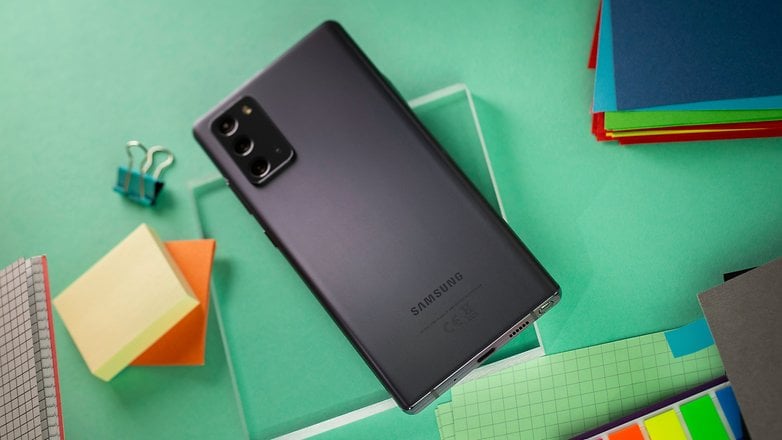
But it is plastic all the same at the end of the day, and on a smartphone sells for a whopping €1,000 ($1,167)! Calm down Antoine, it's not so bad. And in truth, it really isn't. Yes, I exaggerate when I talk about the Fairphone 3 effect. We're not there yet either. The design doesn't look cheap. I just regret that we didn't get a more premium material at this price point. Especially when, once again, Samsung did place the glass on the back of its basic Galaxy S20 model.
I also give Samsung a thumbs up for the thinness of its camera module at the back. The latter has the merit of not taking up too much space.
Its price, which has no relevance
"Yes, the price of Galaxy Note 20 will drop quickly. A recommended retail price of £849 will appeal to operators, who will then be able to offer their customers a device with probably spectacular margins. But you'll probably be able to get the smartphone for £200-£300 less within a few months."
This is what my colleague Stefan wrote last August in his take on the Samsung Galaxy Note 20 which had just been released. And he wasn't wrong, quite the contrary.
Except for the fact that the price of the Samsung Galaxy Note 20, even if it were to drop to £650, is no longer relevant today. Because this week alone, Samsung announced the release of its Galaxy S20 Fan Edition with Snapdragon 865 at £699 for the 5G version.
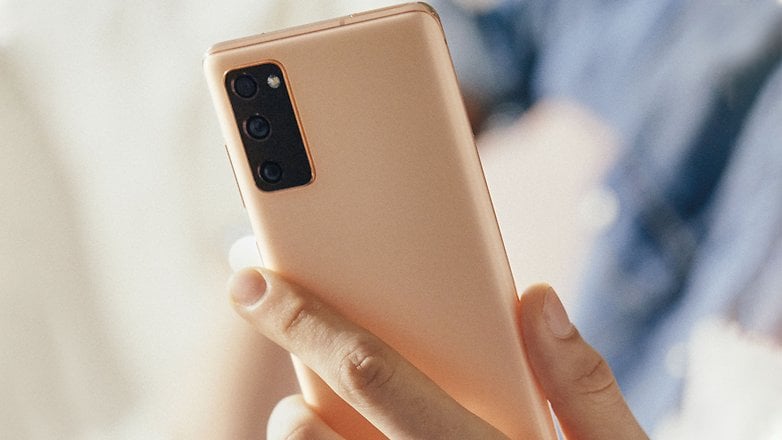
So why choose the Samsung Galaxy Note 20, which is more expensive and with a less powerful processor? The question should not even be mooted in my opinion, hence it does not need an answer. I sincerely doubt that the addition of a stylus will make the difference between the Galaxy Note 20 and the S20 FE.
I found that the Note 20 was already irrelevant when it was released, being little more than an S20 with an S-Pen but with some key features missing, such as a 120Hz refresh rate. But next to the recently announced Galaxy S20 FE, I can tell you without hesitation that the Note 20 has absolutely no place in Samsung's catalog.
The marketing around the 50x zoom is a little silly
The Galaxy Note 20 follows in the dubious footsteps of the S20 in February. Samsung advertised the smartphone to come with a "30x spatial zoom"; with a 1.06x optical zoom - we would assume that the camera hardware should be identical to the S20.
To obtain a digital/hybrid magnification of 30x from the 1x optical zoom of the 64MP main sensor, the magnification must be multiplied by 30. Now, each time a magnification is performed, the image resolution is divided by the square of the magnification. Basically, if I have a 64MP sensor, a 30x zoom divides the resolution by 302 or 30x30, or 900.
With 30x zoom, we end up with 71 "kilopixels". This corresponds approximately to the QVGA resolution of 320x240 pixels. 1995 called and wants its resolution back.
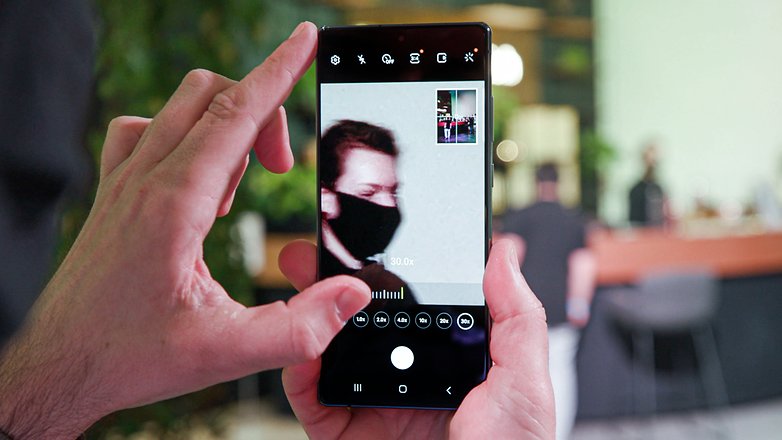
Of course, this is not new in terms of advertising. Also, Samsung is not the first manufacturer to adopt such strategies. But it doesn't seem to get any better. I wish the company would drop this kind of marketing lingo.
Conclusion
My first impressions about the Samsung Galaxy Note 20 were that there was no good reason, apart from the S-Pen but that's not one for me, to buy it as soon as it came out without waiting for a price drop. After nearly 3 weeks of daily usage, I have not changed my mind.
I had a lot of trouble writing this review. Contrary to what many NextPit readers might think, I don't like to be biassed towards a certain smartphone or a manufacturer. I find it horribly arrogant. I'm a journalist and am light years away from having even a fraction of the knowledge and skills of the army of engineers and designers who worked on this product tirelessly.
But it's rather Samsung the brand, that I blame for the choice of such an irrelevant price positioning. The Galaxy Note 20 is not a bad smartphone, far from it. But it's so detached from reality, so out of touch with market standards in this price range.
If you want a flagship Samsung without having to pay between €1,500 and €2,000 for a foldable smartphone, I will not recommend the Galaxy Note 20. The Galaxy S20 Plus and the basic Galaxy S20 will be a better option for less than or the same price. And the Galaxy S20 FE does even better since it finally swaps out the Exynos 990 for the Snapdragon 865 chipset.
Maybe it's unfair to release this review so late. Maybe the Galaxy Note 20 would have been worth looking at or considering before the release of the Galaxy S20 Fan Edition. But what's for sure is this: if you're reading my review right now and was previously considering the Galaxy Note 20, this review would have at least have helped you avoid a bad purchase. Hence, I am able to bring this review to a conclusion with a clear conscience.
To read also on NextPit:
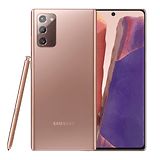


















I have an OnePlus, but these phones are also great
I have an LG V30 which came out with a 18W charger that I 've never used because, in my opinion, it would have shorten the battery life due to the Qualcomm Quick Charge 3.0 technology (which could not be deactivated.
I 've used any non-quick charge charger I could use (yes, even a 5W Apple one), in order to not quick charge my phone.
I also think that we wouldn 't need more than 5V and 3A to get a good compromise between fast charge and battery health preservation.
So please, stop saying that 25W is not much for a smartphone charger!